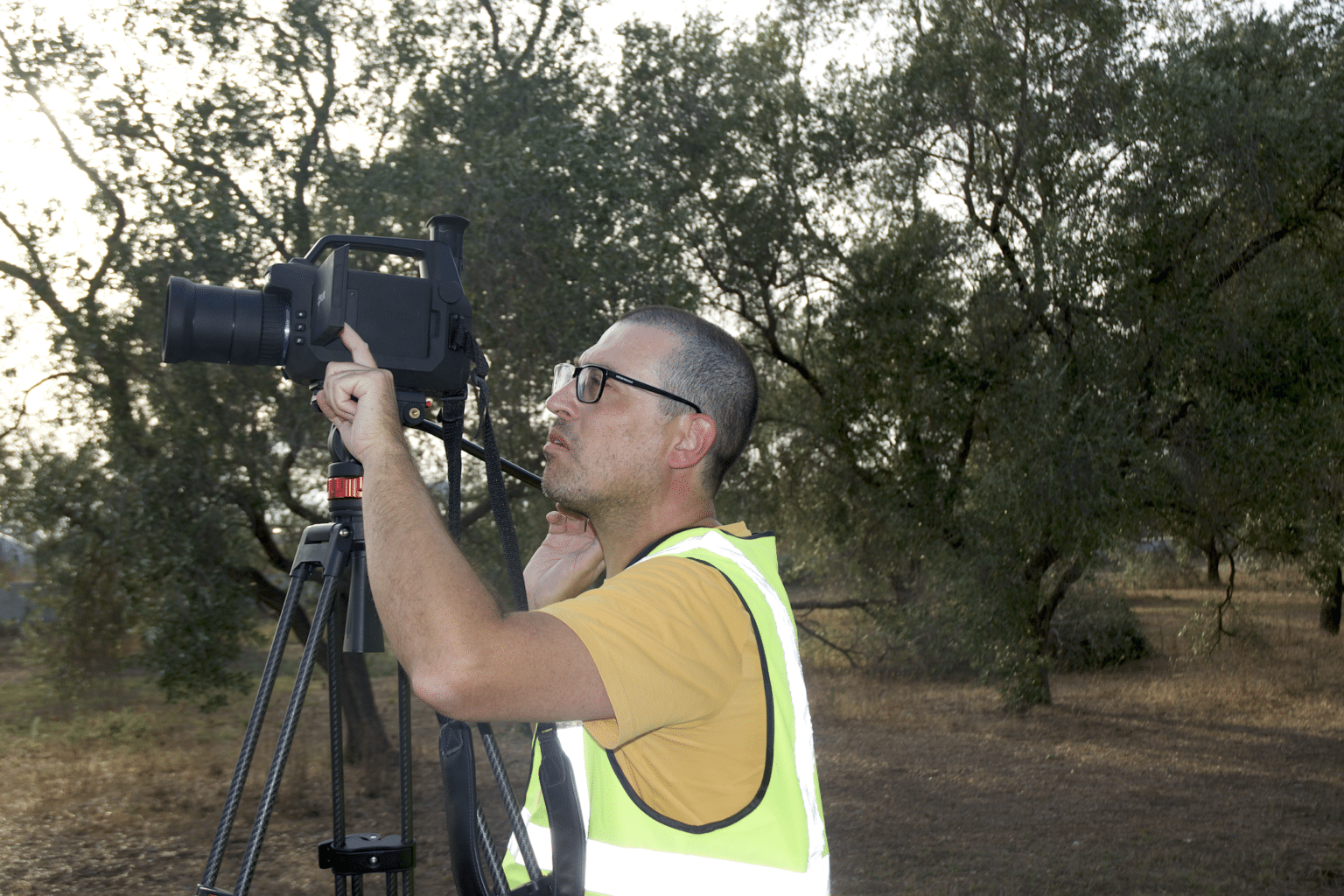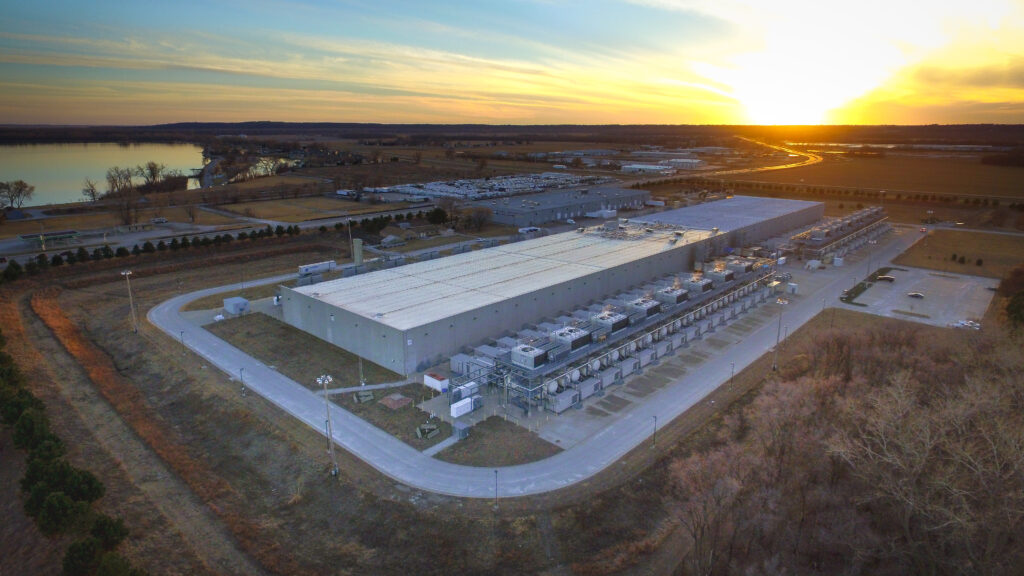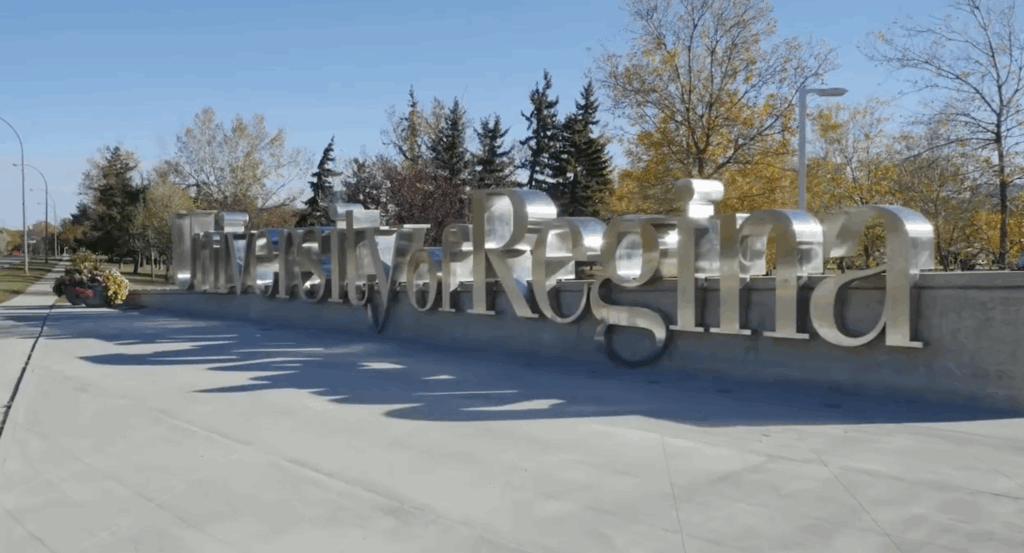This story was developed with the support of Journalismfund Europe.
For centuries, farmers in Melendugno, a town located at the tip of southern Italy’s boot heel, built stone walls to mark the boundaries of their fields, shield their crops from the winds blowing out of North Africa, and divide farmland from pasture.
Today, those same ancient stones stand watch over a changed landscape of parched olive groves, tall metal fences, and barbed wire. Beyond the fences, framed by a few remaining ancient olive trees, sits the Melendugno Reception Terminal — the western endpoint of the Trans Adriatic Pipeline (TAP).
TAP is a natural gas pipeline, 878 kilometres (545 miles) long, that forms the final segment of the Southern Gas Corridor, a pipeline bringing natural gas from the Caspian Sea to Europe, and a key part of the European Union’s effort to lessen its dependence on natural gas from Russia.
TAP connects with the Southern Gas Corridor at Kipoi, Greece, on the Turkish-Greek border. From there, it crosses northern Greece to Albania, then Albania to the floor of the Adriatic Sea, and comes ashore at Melendugno, where it links to Italy’s gas network.
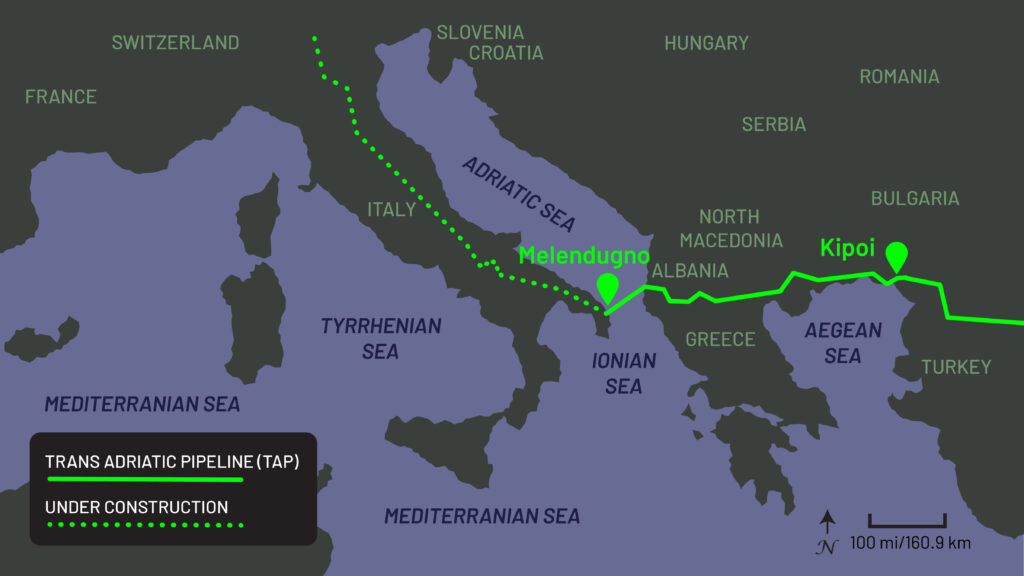
The pipeline has a transport capacity of 10 billion cubic meters of gas per year, with plans to double this to 20 billion by 2027, even though Europe’s decarbonization strategy includes a gradual reduction in gas use from 2030 onwards.
Despite assurances from its backers that TAP is committed to minimizing leaks, data from the European Space Agency’s Sentinel-5P satellite has revealed a worrying trend: Since the pipeline opened in 2020, concentrations of planet-heating methane — the main component of natural gas — have been increasing near key infrastructure points along its route.
Massimo Morigi, a veteran satellite data analyst and member of the Italian environmental association Cova Contro, used Sentinel-5P readings to analyse methane levels at three sites before and after TAP became operational in 2020: two compressor stations in Greece and Albania, and the pipeline reception terminal in Melendugno.
Morigi compared methane levels at the compressor stations in May 2018 and 2019 to levels in June 2023 and 2024; and levels at Melendugno in May 2018 and 2019 to the same months in 2022, 2023, and 2024. Morigi found that since the gas began to flow, there have been significant increases in methane concentrations in proximity to all three locations, jumping from 1,800-1,900 parts per billion (ppb) before 2020, to often exceeding 2,000 ppb since.
The Sentinel-5P averages methane levels across 5–7 kilometers (about 3-4.5 miles), so it cannot show the exact origin of the emissions.
That’s why Cova Contro co-founder Giorgio Santoriello made his way to the Melendugno terminal in late August, building on visits in the spring and summer of 2024, equipped with a FLIR Gx320 thermal imaging camera. The optical sensors in this advanced monitoring device analyse how light interacts with gases — enabling it to spot methane plumes with pinpoint accuracy.
This is far from an academic exercise. Slashing methane pollution — a powerful driver of the climate crisis — is a key target of the European Union’s Green Deal climate policy. The EU introduced new rules last year that strengthened existing methane regulations in Italy and other member states by requiring fossil fuel companies to be more transparent about their emissions — and take rapid action to plug leaks in their pipes.
While Melendugno’s operators say they are complying with the new rules, Cova Contro and other environmental groups say they have detected significant emissions from various vents at Melendugno, which raises questions over how much more methane may be leaking from TAP.
“This technology allows us to capture a range of environmental impacts that traditional monitoring often misses,” Santoriello said.
Why Methane Matters
While much of the discussion around the climate crisis has focused on carbon dioxide (CO2) — the main driver of fast-rising average global temperatures — alarm bells are also ringing over surging concentrations of atmospheric methane.
While methane breaks down rapidly — taking 20 years to dissipate, compared to hundreds to thousands of years for CO2 — it traps approximately 80 times more heat. Methane emissions have been responsible for about a third of the rise in average global temperatures since pre-industrial times.
Methane emissions are also a public health risk, said atmospheric chemist Sandro Fuzzi, research director at the Institute of Atmospheric Sciences and Climate-National Research Council in Bologna. That’s because they can trigger the formation of ground-level ozone, “a toxic gas responsible for roughly half a million deaths worldwide each year.”
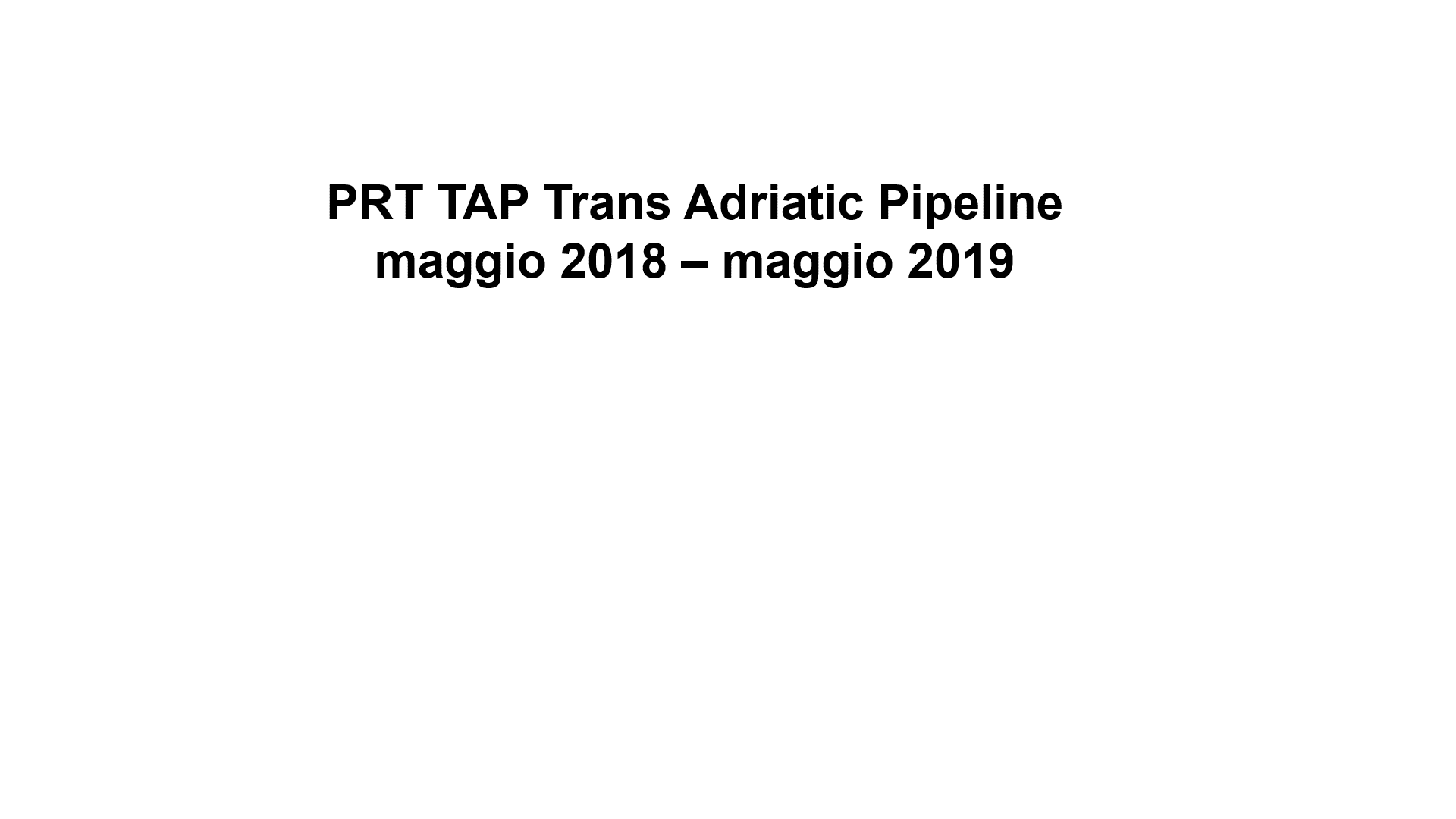
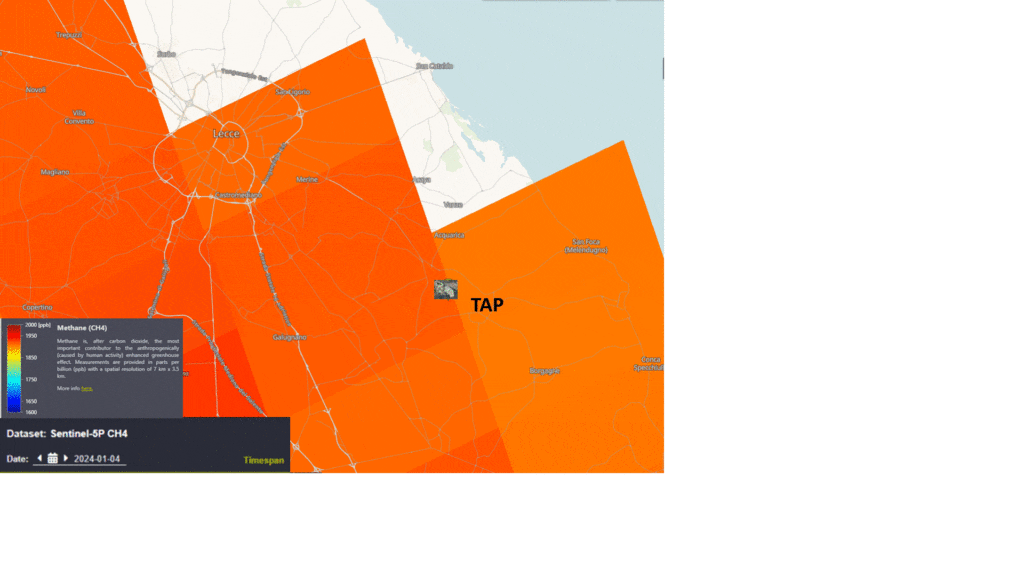
Methane pollution can also contain benzene and other toxic substances, as well as particles of soot so tiny they can lodge in the lungs and enter the bloodstream, contributing to illnesses like asthma, heart disease, strokes, and cancer.
In 2016, the Lega Italiana per la Lotta contro i Tumori (Italian League for the Fight Against Cancer) warned that TAP would put nearby communities at higher risk of health problems, including an increased rate of cancer.
Under the stricter disclosure requirements in the EU’s new methane rules, gas importers are required to report on the methane emissions associated with their supply chains from 2025 onwards. By 2027, they will be required to contract only with suppliers that comply with EU methane standards.
The law also mandates an end to routine venting or flaring of methane, a common practice across the industry. Operators are supposed to limit methane releases to emergencies, such as sudden, dangerous increases in pipeline pressure that could lead to explosions.
Notably, the regulation targets unintended methane leaks, termed “fugitive emissions.” Operators are supposed to implement regular “leak detection and repair” programs, and leaks must be repaired within five to 15 working days — the bigger the leak, the faster it must be stopped.
Leaks Detected
The Melendugno Reception Terminal is fenced off and well-equipped with surveillance cameras, making close-up readings hard to get. During his first visit in spring 2024, from a position on a nearby street, Santoriello detected three worrisome methane flares at the site, but was too far away to collect much data about them.
Santoriello returned to the terminal for a closer inspection two months later, on a sweltering 40-degree Celsius (104 degrees Fahrenheit) summer day. Finding shade beneath some dried-out trees near the terminal, he carefully selected a vantage point that would get him as close as possible to the facility and aimed the FLIR Gx320.
The thermal camera revealed small but constant methane leaking from two TAP vents, and a much bigger leak at a vent operated by Italy-based Snam, Europe’s largest pipeline company. Snam is one of several companies in a multinational consortium backing TAP’s Italian infrastructure. (Italy’s Cassa Depositi e Prestiti, a publicly controlled joint-stock company, owns a 31 percent stake in Snam).
Snam data for the same day showed normal gas flows, with no anomalies, maintenance activities, or emergencies that would have necessitated deliberate venting of gas — suggesting Santoriello had identified leaks in the venting system.
Their locations aligned with readings taken at the same spot in 2021 by the Clean Air Task Force (CATF), an international nongovernmental organisation that monitors methane emissions around the world.
The leaks “are consistent and contribute significantly to methane concentrations in the area,” said James Turitto, CATF’s global campaign director.
Natural gas operations in Italy have a notably high frequency of methane leaks, according to an analysis conducted by CATF. Some regions show leaks at more than 90 percent of surveyed facilities, findings further supported by a 2022–2024 monitoring campaign conducted by CATF and Legambiente, an Italian environmental nonprofit.
Although TAP is relatively new infrastructure, Santoriello said that the data collected by Cova Contro and CATF suggests the pipeline may be suffering from the kind of persistent leaks found in older facilities.
“This calls into question the commitments made by Italy under the Green Deal and European agreements,” Santoriello said’
‘Worn Component’
Snam has sought to position itself as a climate leader by pledging to achieve carbon neutrality in terms of the emissions associated with its own operations, as well as the power generated to keep them running, by 2040 — ahead of EU targets. The company is also part of the Oil & Gas Methane Partnership 2.0, a methane monitoring and mitigation program coordinated by the United Nations Environment Programme.
Nevertheless, doubts remain over how far Snam’s net-zero plan is aligned with the temperature targets that nations agreed to in the 2015 Paris Agreement on climate change. The company’s continued investment in gas network and storage facilities, and the huge quantities of emissions created when the gas it provides is burned, are undermining its climate goals, according to a January report by the Institute for Energy Economics and Financial Analysis.
In response to questions about the leaks detected by Santoriello and CATF, Snam stated that it was aware of the emissions, and acknowledged that they did “not represent intentional gas discharges from the ‘vent’ in question, of an operational or emergency nature.”
According to Snam, the leak was caused by “the imperfect internal seal of a worn component,” which it would replace “in the coming months.” The company said it shares relevant methane data “with the Competent Authorities,” referring to the Region of Puglia.
In response to a Freedom of Information request, the Regional Agency for Environmental Protection (ARPA) in Bari, Puglia, said that under the TAP Interconnection environmental monitoring plan (PMA), Snam has not been required to submit atmospheric monitoring data since the end of construction.
TAP AG, a Swiss-based joint venture owned in equal parts by Snam, British oil giant BP, SOCAR, Fluxys, and Enagas that operates TAP, said that it regularly monitors and takes steps to stop non-emergency gas releases.
“The fugitive emissions you referred to from the related vents were quickly detected and adequately quantified by TAP by international protocols for calculating methane emissions, and the results were analysed through a specialized third-party contractor and are reported annually to the Competent Authorities,” the company said.
TAP AG said it was taking steps to repair the leaks, and that they had been included in the company’s most recent Greenhouse Gases (GHG), an annual report on CO2, methane, and other carbon emissions from TAP AG’s operations across Greece, Albania, Italy, and Switzerland (where the company is headquartered), “which are covered by the Kyoto Protocol for the preparation of emissions inventories.”
More broadly, Veysalov Vugar, TAP AG’s head of external affairs, has sought to downplay the climate damage caused by methane emissions, describing natural gas as “comparatively the cleanest of fossil fuels.”
Subscribe to our newsletter
Stay up to date with DeSmog news and alerts
“At TAP, we are focused on ensuring that the energy transition happens in the most sustainable way possible, particularly in Southeast Europe,” Vugar said in a video interview in 2023. “It’s just a pipeline, buried at least a meter underground,” he added, “quietly transporting gas.”
In Italy, TAP AG is required under the TAP Interconnection PMA to submit detailed yearly reports to the Region of Puglia on methane emissions, as well as semi-annual reports on other potentially harmful atmospheric pollutants.
However, it is not clear whether those reports have been made. In its response to the Freedom of Information request, ARPA stated that it has not received TAP reports from the Region since 2022, when TAP submitted a report containing 2021 data. ARPA provides scientific support on pipeline monitoring and analysis to the Region of Puglia, but has no authority to enforce the PMA.
ARPA also stated that it has not corresponded with the Region of Puglia about the missing reports.
The Region of Puglia did not respond to questions.
TAP’s Greenhouse Gas Report (GHG) 2024 shows a reduction of methane emissions across its operations, with data broken down by country and installation type. But the report doesn’t provide a more granular picture of exactly where methane is being emitted, and in what quantities — meaning there is no estimate of the actual methane emissions from the TAP Interconnection vent at Melendugno.
Local Opposition
Italian law gives citizens the right to access environmental data about their municipalities — a principle also enshrined in the EU’s 1998 Aarhus Convention, which Italy ratified in 2001.
However, activists and Melendugno residents contend that TAP has been plagued with transparency problems since its planning and construction phases, which began more than a decade ago.
Some residents say they were unaware the pipeline was coming until they were notified that portions of their land would be expropriated for the project. Some say they never received a notice, and others that they found out when workers from the transnational company behind the project showed up on their property.
Antonio Dell’Anna, a local resident and landowner, said he was aware at the time that TAP employees were in the area. “But we didn’t know they were interested in this particular plot of land” — a section of the property he co-owns with his father — until they saw a stranger walking on it one day. The man identified himself as an archaeologist working for the pipeline.
Dell’Anna said he and his father were forced to give up the property, and that they had to negotiate three offers from TAP over 10 years to receive a fair price in compensation.
“It was something imposed on us,” said Dell’Anna, “without any room for dialogue, not even minimal.”
According to Marco Poti, the mayor of Melendugno from 2012 to 2021, TAP’s influence in Rome allowed the company to bypass questions or opposition to the project from him, the city council, and local residents.
Meanwhile, pro-TAP advertising spanned radio, television, and regional and national newspapers, said Poti. “Their goal was to portray this project as an opportunity, not as something harmful and dangerous.”
At a public hearing in October 2017, Poti said that “no project details have been received or published, apart from an indicative layout plan” for the TAP Interconnection — the infrastructure linking the pipeline to Italy’s gas network, where the leaks were detected.
Twenty-five people who participated in protests against the project in 2017 were subsequently charged, said lawyer Francesco Calabro, who represented some of the protestors. The charges included taking part in an unauthorised protest, obstruction of public roads, and insulting a public official.
In 2018, the municipality of Melendugno and the No TAP Movement, a local campaign group, filed a lawsuit against TAP AG alleging that the company had failed to conduct proper environmental risk assessments, among other violations. However, a local court dismissed the case in May this year, citing a lack of evidence.
The verdict was a blow to campaigners, who say TAP AG should be more transparent.
“TAP was plundering our resources,” said Serena Fiorentino, an activist with a group of mothers supporting the No TAP Movement. “Here, power is power.”
‘Independent Monitoring’
In August, Santoriello found only barely-detectable traces of very small leaks from one of the two TAP terminals — raising the question of whether the leaks he’d found the previous year had been fixed, or whether there might be some other reason for the lower readings. Still, for Cova Contro activists, the task of building a more precise picture of the methane leaking from the Trans-Adriatic Pipeline has only just begun.
The group plans to organise public meetings, inform local media, and — if it can gather sufficient evidence — petition public prosecutors to investigate any possible breaches of the regulations.
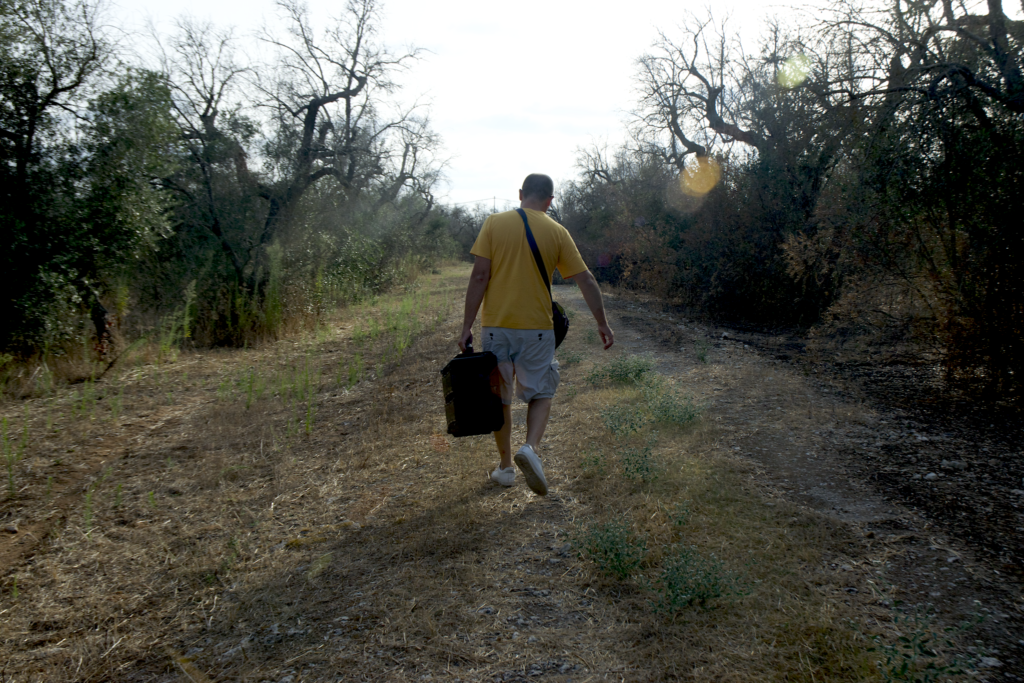
Santoriello said Cova Contro wanted to work with regulators to stage unannounced site visits to check for methane leaks, but the relevant authorities declined to engage, or even respond to requests for a meeting. That has left the public dependent on methane data gathered by the gas companies themselves, he said, when the state should be taking the lead in monitoring.
“The data shows that current controls are insufficient,” Santoriello said. “The only certainty we have is that private [companies] possess technologies that are more advanced than those used by public regulators, and that alone should be enough to alarm any reasonable person.”
Critics say that there is an even more fundamental question hanging over TAP: At this critical point in the climate crisis, with gas demand declining and the EU committed to decarbonization, why continue investing in a natural gas pipeline?
Alessandro Manuelli, an engineer who coordinated a municipal commission established by Melendugno to evaluate the TAP project, said he could not understand why TAP was pushing to reach its annual capacity of 20 billion cubic meters of gas imports, when the EU’s methane law envisages phasing out natural gas altogether.
“If we truly intended to respect the Paris Agreement,” he said, “we should never have built TAP in the first place.”
This story was developed with the support of Journalismfund Europe.

Subscribe to our newsletter
Stay up to date with DeSmog news and alerts


